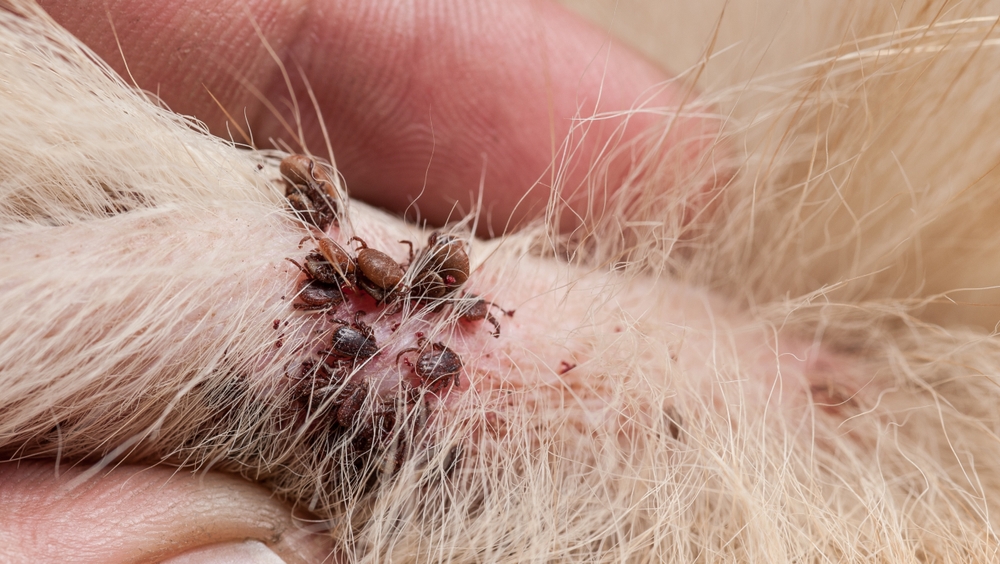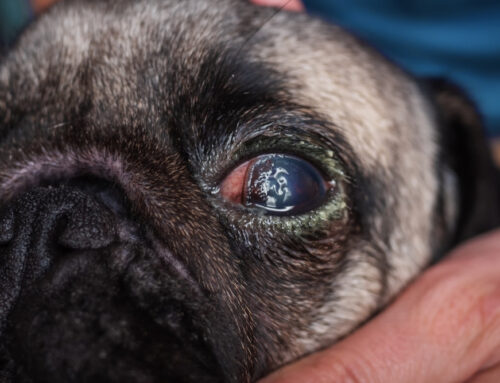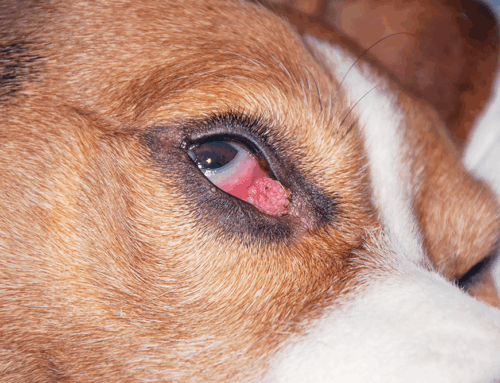Because ticks are active in temperatures higher than 40 degrees, they remain a year-round threat to your pet in our warm climate. Ticks are considered a significant disease vector, because they can carry multiple bacteria and viruses that they transmit from one pet or person to another. Lyme disease is one of the most well-known of these diseases, but several others can affect dogs, and some can affect their eyes. Envision More Veterinary Ophthalmology wants pet owners to recognize tick-borne disease signs and learn prevention strategies that will protect their dog’s systemic and eye health.
Lyme disease in dogs
Lyme disease is caused by Borrelia burgdorferi bacteria, which can be present in up to 50% of ticks in any given region. The bacteria take at least 24 hours to be transmitted by attached ticks, and while most dogs who are exposed to this bacteria do not become sick, some suffer serious consequences. The most common Lyme disease illness signs in dogs include:
- Fever
- Swollen lymph nodes
- Lethargy
- Joint swelling and pain
- Shifting leg lameness
A few dogs develop an overactive immune response to the Lyme bacteria that can lead to kidney, heart, or neurological problems—serious complications that may be fatal in some pets.
Other tick-borne diseases and ocular effects in dogs
Lyme disease does not typically cause ocular problems in dogs, but several other common tick-borne diseases can. Ticks can carry more than one bacteria, which can lead to multiple disease co-infection from a single bite. Pets can also pick up more than one tick at a time, which is another route to co-infection. The diseases that most often lead to ocular signs include anaplasmosis, ehrlichiosis, and Rocky Mountain spotted fever. Disease signs frequently overlap, and may include:
- Fever
- Lethargy
- Enlarged lymph nodes
- Clotting problems leading to pinpoint bruising
- Conjunctival, corneal, or retinal bleeding
- Uveitis (i.e., inflammation inside the eye)
Our team sometimes diagnoses these tick-borne infections, because eye problems may be the first or only sign. Uveitis is a serious eye problem that can lead to vision-threatening complications, such as glaucoma or retinal detachment, but prompt diagnosis and proper treatment can quickly reduce inflammation, and most affected dogs make a full recovery.
Tick-borne disease diagnosis and treatment
Many primary veterinarians recommend annual screening for the most common tick-borne diseases, which they can do alongside your pet’s routine heartworm test. They may order additional tests if the initial screening shows disease exposure, which can help determine whether treatment is required. Tick-borne disease panels, along with tests for several other infections, are helpful to identify the cause in sick pets with ocular or other tick-borne disease signs, and to rule out other diseases.
Whether signs are systemic or confined to the eye, Lyme and other tick-borne diseases require systemic treatment with antibiotics for at least four weeks. Acutely sick pets may require hospitalization for fluids and injectable medications until they are stable and eating and drinking on their own. Eye-specific treatments may include topical or systemic anti-inflammatories and preventive glaucoma medications.
Pet tick prevention strategies

You can protect your pet from tick-borne disease exposure and subsequent complications by practicing meticulous tick prevention strategies that should include:
- Prevention medication — A prescription or veterinarian-approved flea and tick preventive should be administered according to the label instructions. These products come in topical, oral, and long-lasting collar formulations, and are highly effective at killing and repelling ticks when used as directed.
- Habitat clearing — Reduce tick habitat on your property by clearing leaf litter and keeping grass cut short.
- Tick checks — Check your pet for ticks each time they come in from outside, and remove ticks promptly. Do not attempt to burn them off— ask your veterinarian to show you the proper removal technique.
- Brushing — Brush long-haired pets regularly to remove unattached ticks from their hair coat.
- Watching where you walk — Stay on paved, limestone, or mowed paths when out walking with your pet.
A Lyme disease vaccination, which is given as an initial series of two doses, followed by annual boosters, is also available for your dog. The vaccine is highly effective for pets with high tick exposure, but only protects against one of many tick-borne diseases. For complete protection, practice the tick prevention strategies listed above.
Your primary veterinarian is your best resource to learn more about tick-borne diseases, and for help selecting the best tick prevention product for your pet, but dogs with tick-borne disease who develop ocular complications should see our Envision More Veterinary Ophthalmology team. Contact us to schedule a visit and consultation to ensure an accurate diagnosis and vision-saving treatments.







Leave A Comment